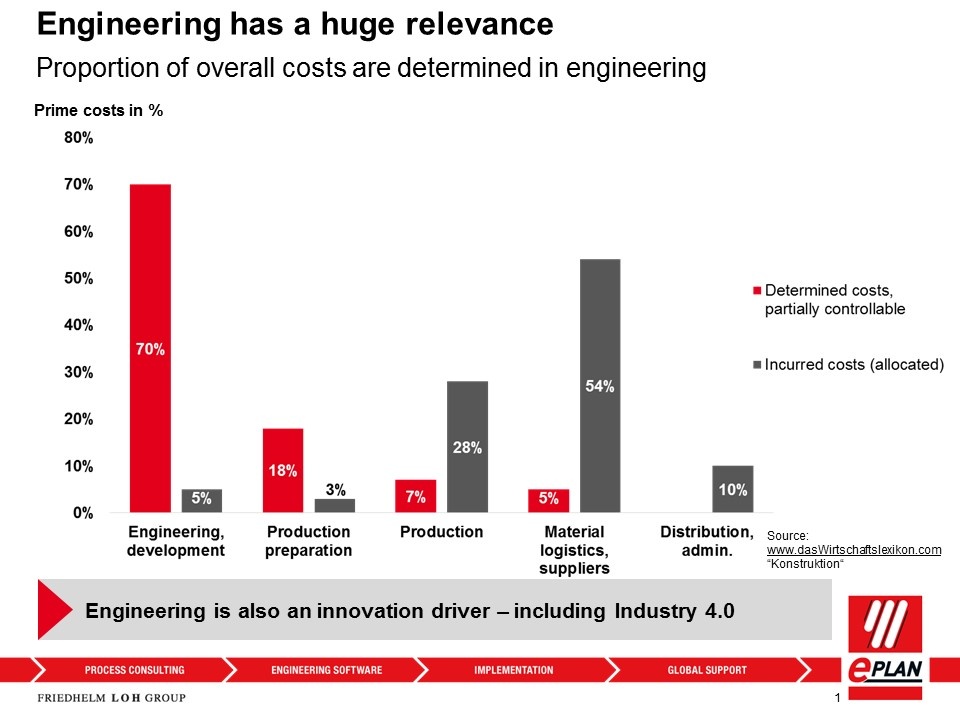Author
 Tony Ward
Tony has been working successfully as a Regional Sales Manager in the UK for the past 16 years. This has involved dealing with companies of all sizes, understanding their situation and business issues in order to offer the right solution to them. Successes of note have been Nissan in the UK and James Fisher Nuclear. Tony has also worked on international accounts such as Coca Cola, being responsible for the sale and roll out of EPLAN across the UK.
ward.t@eplan.co.uk
Tony Ward auf LinkedIn
Tony Ward
Tony has been working successfully as a Regional Sales Manager in the UK for the past 16 years. This has involved dealing with companies of all sizes, understanding their situation and business issues in order to offer the right solution to them. Successes of note have been Nissan in the UK and James Fisher Nuclear. Tony has also worked on international accounts such as Coca Cola, being responsible for the sale and roll out of EPLAN across the UK.
ward.t@eplan.co.uk
Tony Ward auf LinkedIn
How Can Engineering Save You Money?
In the past, machine manufacturers in Western Europe were the exclusive domain for automating processes with machines; however nowadays Asia and Eastern Europe are just as good and have lower costs. Germany is becoming very good at developing innovative, very customer specific solutions. The international competition has grown hugely due to globalisation, which has resulted in prices being under pressure.
Engineering Reduces Costs
To stay competitive in the next five to ten years, firstly, machine manufacturers must lower their prices. In order to do this, it is important to know where the costs are incurred in the business process. Most costs are incurred in the production and logistics stage; this stage accounts for 80% of costs. If most costs are incurred at this stage, can we save the most money at this stage? Unfortunately not! An attempt to work more efficiently in the production and logistic stage often only leads to marginal cost reductions.
So, where can the costs be influenced? The choices that are made in the engineering stage determine 70% of the total costs, i.e. it's up to the engineers themselves to save money. This isn't anything new - it's always been considerably cheaper to correct mistakes in engineering, reducing the chance of mistakes needs to become a priority.

Shorter Time-to-Market and Higher Quality
British machine manufacturers prioritise cost reduction; this is important, however it is more important to remain competitive. Machine manufacturers that want to differentiate themselves in the current market must develop their products more quickly and they must have higher quality if they want to stay in competition with their competitors in Asia and Eastern Europe. For the solutions that machine manufacturers develop, customers are demanding shorter time-to-market and higher quality. If the price is good, the speed and quality make all the difference.
Less Technicians and more Specific Customer Requirements
There aren't enough technically qualified staff on the job market. The baby-boom generation is in retirement and the influx of young technicians is decreasing. The need to do more with less people continues to increase because of the shortage of technicians.
Internal factors also play a role. An efficient engineering and production process is needed to lower production costs. You can achieve this by limiting the number of product variants and making the development and production more repetitive so that less (technical) know-how and manpower is necessary. But isn't this at odds with the current market in which customer requirements seem to be getting more specific?
Digitalisation Strategy
The solution to this dilemma is at your fingertips. Whether you call it 'Industry 4.0', 'Smart Industry', 'Big Data' or the 'Internet of Things', we will have an industry where everything is connected. An industry that can react rapidly to every specific customer question. For the first time in history, technology is ready for this development and in the current competitive market, the machine manufacturers should also be ready for it.
But, what do these developments mean for machine manufacturing? What does the route to a new industrial future look like? Which obstacles will you face? One thing is for sure: this development will have the characteristics of a gradual evolution rather than a sudden revolution. And the winners will be the companies who engage a clear digitalisation strategy, preferably, as soon as possible.
What does your digitalisation strategy look like? How can machine manufacturers face the challenges?
Standardisation and Automation
- Automate work processes
- Design your installations and machines in smaller, reusable components
Work in a functional and interdisciplinary way
- Design the machines based on their different functions- Create functional process modules in an interdisciplinary way, i.e both mechanical and control technology (hardware and software)
- Make the functional basic components parametric so that each one has its own variants and specifications. This allows you to create different components, clear installations and machines with different variants, versions and options
Integration
- Integrate this method into the overall business process
- This requires a transparent connection between your Product Lifecycle Management (PLM) process, ERP (Enterprise Resource Planning) system and the PDM (Product Data Management) system in mechanical engineering from all disciplines. So not only mechanical but also electrical and control systems.
Store knowledge
- Digitalise the engineering know-how of your engineers in your systems
Connect to the industry standard
- Make use of standard systems which prove themselves in the market rather than customised solutions
The aim of these steps is to digitalise the whole process: from sales, through to engineering to job preparation and production. This results in less knowledge intensive design and production process with error less, digital data transfer, which in turn leads to lower costs and shorter development times.
What does this digitalised impact mean for your sales, engineering, job preparation, production, logistics and service department? Read more about this in the following blog. Stay tuned!




Comments